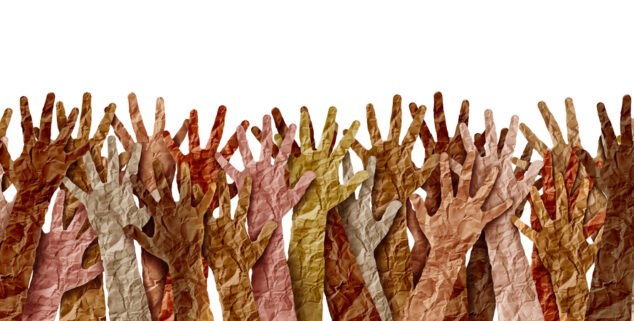Analysis
CA120: Asian, Latino voters heading in opposite direction
 Image by lightspring
Image by lightspringAsians and Latinos in California are the two fastest growing ethnic populations on the voter file. But they appear, politically, to be headed in slightly different directions.
For decades, Latinos have been a consistent base of support for Democrats, particularly since the Proposition 187 campaign of the mid-1990s, promoted by then Governor Pete Wilson as a way to engage / enrage voters going into the contentious 1994 gubernatorial election.
In the year Prop 187 passed, nearly 70% of Latinos were registered Democratic – but their total numbers were much smaller, with fewer than a million registrants, compared to more than six million in the latest registration figures.
 While Latinos were a growing Democratic bloc, Asians were much more in play for Republicans, with 38% of them registering Republican compared to 40% Democratic – just a two-point Democratic advantage. Within the Asian population there were some nationalities that were much stronger for Republicans, leading with Vietnamese who were 54% Republican, and only 22% Democratic. In Orange County, Vietnamese voters were 63% Republican, and even among all other Asian nationalities, Republicans had a 22-point registration advantage behind the Orange Curtain.
While Latinos were a growing Democratic bloc, Asians were much more in play for Republicans, with 38% of them registering Republican compared to 40% Democratic – just a two-point Democratic advantage. Within the Asian population there were some nationalities that were much stronger for Republicans, leading with Vietnamese who were 54% Republican, and only 22% Democratic. In Orange County, Vietnamese voters were 63% Republican, and even among all other Asian nationalities, Republicans had a 22-point registration advantage behind the Orange Curtain.
Over the decades, both the Asian and Latino populations have grown as a share of the voter file, with Latinos reaching 28% of total registrations and Asians at 11%. And as they have grown, they have shifted in their demographic makeup, particularly the split among foreign born voters and those US Born second, third and fourth generation voters.
Looking to the share of foreign born versus US Born among Latinos and Asians we can see in LA County (which has better historic data) that in 2002 37% of Asians and 55% of Latinos registered to vote were foreign born. That contrasts with the current foreign-born share at just 8.7% for Latinos and 9.2% for Asians.
With this shift, the partisan changes have been dramatic, with Asians coming up to 42% Democratic and just 22% Republican – a 20-point Democratic advantage. At the same time, Latinos have dropped to 55% Democratic and 16% Republican, still a whopping 39% Democratic advantage, but much narrower than it was more than 25 years ago.
Asians and Latinos in California are the two fastest growing ethnic populations on the voter file. But they appear, politically, to be headed in slightly different directions.
In a way, this can simply be seen as a function of foreign born and US born voters having different life experiences, with changing viewpoints on economic and social issues, along with some reversion to the mean. Latinos, with wild Democratic margins are becoming more independent and Republican, while Asians, particularly the heavily leaning Republican subgroups, such as Vietnamese, skewing back toward the overall registration rates.
We have seen these trends continue in the most recent registrations. Statewide, Latino registrations before the 2022 General Election were at 56% Democratic and 15% Republican, but since the 2022 General they have shifted to 50% Democratic and 19% Republican. This is still a healthy 31-point Democratic advantage over Republicans, but a 10-point more Republican than the base.
At the same time, Asians have been registering at 43% Democratic since 2022, compared to 41%, and Republican registrations have been steady at 22%, giving Democrats a 3-point gain among newer registrants.
Looking at the competitive legislative and congressional districts, we can see how these shifts change the landscape for the most contentious races, and could impact the control of the US House. As an example, in the 70th Assembly District, Latinos registrations since the 2022 General have skewed Republican by 11-points, while Asian registrations have skewed more Democratic by 6-points. In the 23rd State Senate district, Latinos have been registering 10-points more Republican and Asians have been registering 4-points more Democratic.
These changes in rates of registration could eventually have a significant impact on the partisanship of key districts, and change the coalitions within each party. But it isn’t something that is going to change overnight.
One additional factor is turnout, with Latinos continuing to lag in participation, likely due to socioeconomic factors, and data showing that they are particularly not benefiting from the transition to mailed ballots, while Asians have seen to prosper with the recent changes in voting in California. This could serve to accelerate the shifts among Asian voters and diminish the shift from Latinos.
Want to see more stories like this? Sign up for The Roundup, the free daily newsletter about California politics from the editors of Capitol Weekly. Stay up to date on the news you need to know.
Sign up below, then look for a confirmation email in your inbox.

Leave a Reply